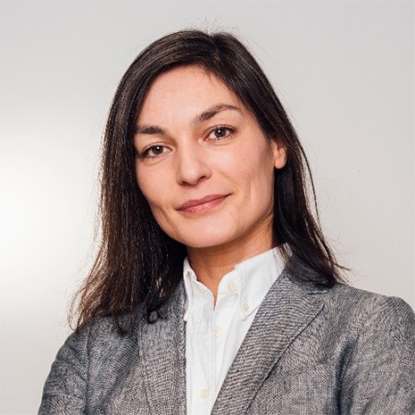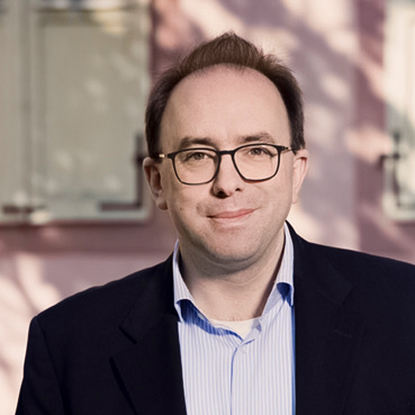-
![Hin- und Herbewegungen und Richtungsänderungen helfen Polymeren und Bakterien, durch die Poren einer komplex aufgebauten Umgebung zu navigieren, damit sie nicht in Sackgassen stecken bleiben.]() Bild: Univ. Princeton / Christina Kurzthaler
Bild: Univ. Princeton / Christina Kurzthaler![Hin- und Herbewegungen und Richtungsänderungen helfen Polymeren und Bakterien, durch die Poren einer komplex aufgebauten Umgebung zu navigieren, damit sie nicht in Sackgassen stecken bleiben.]() Bild: Univ. Princeton / Christina Kurzthaler
Bild: Univ. Princeton / Christina KurzthalerWie Bakterien aus Labyrinthen herausfinden
2021/12/08
Physik: Veröffentlichung in Nature Communications
Forschende der US-amerikanischen Universität von Princeton haben zusammen mit der TU Darmstadt und der Heinrich-Heine-Universität Düsseldorf (HHU) ein Modell entwickelt, das die Bewegung von Bakterien in komplexen Umgebungen simulieren kann. Das in der Zeitschrift Nature Communications vorgestellte Modell kann unter anderem bei der Entwicklung intelligenter pharmazeutischer Wirkstofftransporter helfen.
-
![Dr.Ing. Uwe Niedermayer am Tisch mit Beschleunigerchips vor sich.]() Bild: Katrin Binner
Bild: Katrin Binner![Dr.Ing. Uwe Niedermayer am Tisch mit Beschleunigerchips vor sich.]() Bild: Katrin Binner
Bild: Katrin BinnerFörderung für hoch innovative Ideen
2021/12/02
LOEWE-Exploration: TU mit zwei Projekten erfolgreich
In der neuen Förderlinie LOEWE-Exploration für unkonventionelle innovative Forschung des hessischen Wissenschaftsministeriums erhalten sieben Forschungsprojekte vom 1. Januar 2022 an für die Laufzeit von bis zu zwei Jahren Fördermittel in Höhe von insgesamt rund 1,8 Millionen Euro für ihre mutigen Forschungsansätze – darunter auch zwei Projekte der TU Darmstadt zu Hochenergie-Elektronenmikroskopie und Modellierung von Slums zur Ermittlung von Infrastrukturbedarfen.
-
![]() Picture: HHU / Alexandra V. Zampetaki
Picture: HHU / Alexandra V. Zampetaki![]() Picture: HHU / Alexandra V. Zampetaki
Picture: HHU / Alexandra V. ZampetakiThree-body interactions bring egoists into the collective comfort zone – even penguins
2021/11/30
Physics: publication in PNAS
A research team from Heinrich Heine University Düsseldorf (HHU) has worked together with TU Darmstadt and an MPI based in Garching to examine the group dynamics of communicating active particles. These particles are consistently focused on self-optimisation. By always endeavouring to maintain their own personal comfort, they also help the other group members. As the researchers describe in the journal Proceedings National Academy of Sciences (PNAS), such self-optimisation is a common multi-body phenomenon which can occur for penguins and bacteria.
-
![]() Bild: Gregor Rynkowski
Bild: Gregor Rynkowski![]() Bild: Gregor Rynkowski
Bild: Gregor RynkowskiQuantenchemie für mehr Nachhaltigkeit und Mikro-RNAs in der Medizin
2021/11/19
Forscherinnen der TU erhalten Dr. Hans Messer Stiftungspreis
Assistenzprofessorin Dr. Vera Krewald aus dem Fachbereich Chemie und Dr. Meike Saul aus dem Fachbereich Biologie der TU Darmstadt sind mit dem Dr. Hans Messer Stiftungspreis 2021 ausgezeichnet worden. Der Preis ist mit insgesamt 50.000 Euro dotiert.
-
![Porträtbild von Professor Dr. Achim Schwenk]()
![Porträtbild von Professor Dr. Achim Schwenk]()
Professor Schwenk ist „Highly Cited Researcher“
2021/11/17
Kernphysiker unter den meistzitierten Forschenden weltweit
Professor Achim Schwenk vom Institut für Kernphysik der TU Darmstadt gehört laut des Zitationsrankings „Highly Cited Researchers“ des Informations- und Technologieunternehmens Clarivate Analytics zu den meistzitierten Forschenden.
-
![Professor André Seyfarth (l.), Dr. Christian Schumacher (r.) und Dr. Maziar Sharbafi (m.) bei der Anpassung eines Soft-Suit-Exoskelett-Prototyps.]() Bild: Katrin Binner
Bild: Katrin Binner![Professor André Seyfarth (l.), Dr. Christian Schumacher (r.) und Dr. Maziar Sharbafi (m.) bei der Anpassung eines Soft-Suit-Exoskelett-Prototyps.]() Bild: Katrin Binner
Bild: Katrin BinnerForschung für körperlich gehandicapte Menschen
2021/11/08
Neues Graduiertenkolleg an der TU Darmstadt
Die Deutsche Forschungsgemeinschaft (DFG) hat das neue Graduiertenkolleg „LokoAssist – Nahtlose Integration von Assistenzsystemen für die natürliche Fortbewegung des Menschen“ an der TU Darmstadt bewilligt. Beteiligt sind die Universität Heidelberg und das Zentralinstitut für Seelische Gesundheit in Mannheim. Das Kolleg wird ab 2022 für viereinhalb Jahre mit voraussichtlich rund 6 Millionen Euro gefördert.
-
![]() Bild: Kevin Graeff
Bild: Kevin Graeff![]() Bild: Kevin Graeff
Bild: Kevin GraeffWasser-in-Öl-Emulsionen – eine interessante Verbindung
2021/10/21
Veröffentlichung im Journal „Soft Matter“
Die Arbeitsgruppe um Physik-Professorin Regine v. Klitzing hat in Kooperation mit Forschenden der TU Berlin und der University of Leeds anhand von Experimenten mit Wasser-in-Öl-Emulsionen Wege entdeckt, die hilfreich sein können für Medizin, Pharmazie und in der Chemie. Die Forschungsarbeit wurde jüngst im Journal „Soft Matter“ publiziert und auf der Titelseite der Ausgabe gewürdigt.
-
![Ausbildung von „Droploiden“ (blaue Tröpfchen) unter Laserbestrahlung. Die Droploiden enthalten sowohl heiße (schwarze) wie kalte (weiße) Kolloidteilchen und können sich dadurch motorisiert längs des roten Pfeils fortbewegen.]() Bild: HHU / J. Grauer; U. Göteborg / F. Schmidt
Bild: HHU / J. Grauer; U. Göteborg / F. Schmidt![Ausbildung von „Droploiden“ (blaue Tröpfchen) unter Laserbestrahlung. Die Droploiden enthalten sowohl heiße (schwarze) wie kalte (weiße) Kolloidteilchen und können sich dadurch motorisiert längs des roten Pfeils fortbewegen.]() Bild: HHU / J. Grauer; U. Göteborg / F. Schmidt
Bild: HHU / J. Grauer; U. Göteborg / F. SchmidtMotorisierte Tröpfchen dank Rückkopplung
2021/10/14
Veröffentlichung in Nature Communications
Ein deutsch-schwedisches Physikerteam um Erstautor Jens Christian Grauer von der Heinrich-Heine-Universität Düsseldorf (HHU) und Letztautor Benno Liebchen von der TU Darmstadt untersuchte ein spezielles System kolloidaler Teilchen, das sie mit Laserlicht anregten.
-
![Prof. Dr. Andreas Blaeser]() Bild: Sandra Junker
Bild: Sandra Junker![Prof. Dr. Andreas Blaeser]() Bild: Sandra Junker
Bild: Sandra JunkerKnochenersatz aus dem 3D-Drucker
2021/10/08
Innovatives Material ahmt Knochenstruktur nach
Ein Team um TU-Professor Dr.-Ing. Andreas Blaeser entwickelt zusammen mit den Universitätskliniken in Mainz und Frankfurt 3D-gedruckte Gerüste für die Behandlung von großen Knochenschäden. Der Initiativfonds Forschung der Rhein-Main-Universitäten fördert das Vorhaben seit Mitte vergangenen Jahres.
-
![]() Picture: Paul Glogowski
Picture: Paul Glogowski![]() Picture: Paul Glogowski
Picture: Paul GlogowskiLooking into space
2021/09/29
An observatory enriches teaching in the Department of Physics at TU Darmstadt
The way to the stars leads through an inconspicuous door in the panelling of the lecture hall in the Uhrturm building, and then up a steep grid staircase to a hatch in the ceiling. Anyone who climbs through it will find themselves in front of TU's observatory, which is surrounded by the protective glass cube on top of the tower. Four remote-controlled telescopes are aimed up into the sky, observing the sun by day and clusters of stars, nebulae and galaxies by night. The images and data that are recorded are used in lab courses and teaching in the Department of Physics.
Research Field M+M
Archive
Archive






















